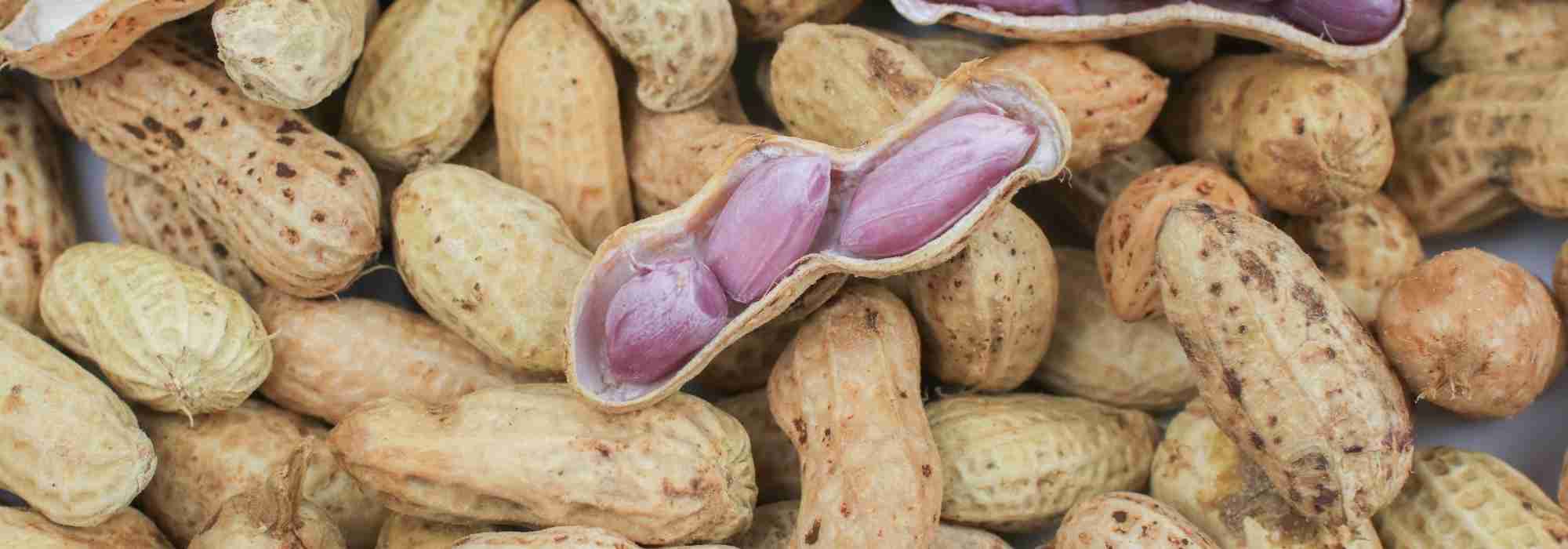
How to grow peanuts ?
Sowing, planting, care and harvest advice for peanuts
Contents
When we think of peanuts, we think of snacks with friends or impromptu nibbles while watching a match. But behind these crunchy little seeds lies an astonishing plant, hardy… and frankly delightful to grow in the garden! Yes indeed, the peanut plant (Arachis hypogaea), far from being restricted to warm and distant lands, can also find its place in our amateur vegetable plots, provided a few cultivation and care techniques are followed. It’s even a remarkable plant that flowers above ground before burying its fruits in the soil. A plant that’s truly worth its weight in peanuts!
Discover how to sow, care for and harvest peanuts, this curious legume that can be grown in open ground or pots depending on the region.
What exactly is a peanut?
Amateur gardeners with a passion for botanical curiosities cannot help but be drawn to this rather unusual plant: the peanut (Arachis hypogaea). It is actually an annual or perennial herbaceous plant from the Fabaceae family (formerly legumes), native to South America, and more specifically Mexico. Despite its exotic appearance and widespread cultivation in Africa, the peanut, prized for its oil-rich seeds, can thrive perfectly well in our latitudes.
Depending on the variety, the peanut forms a clump of foliage 30 to 70 cm tall, with a creeping and voluble habit. The pinnate foliage is divided into 4 to 6 ovate leaflets. As for the flowering of peanuts, from May to August, it is typical of Fabaceae—that is, papilionaceous—and a fairly bright yellow to orange.
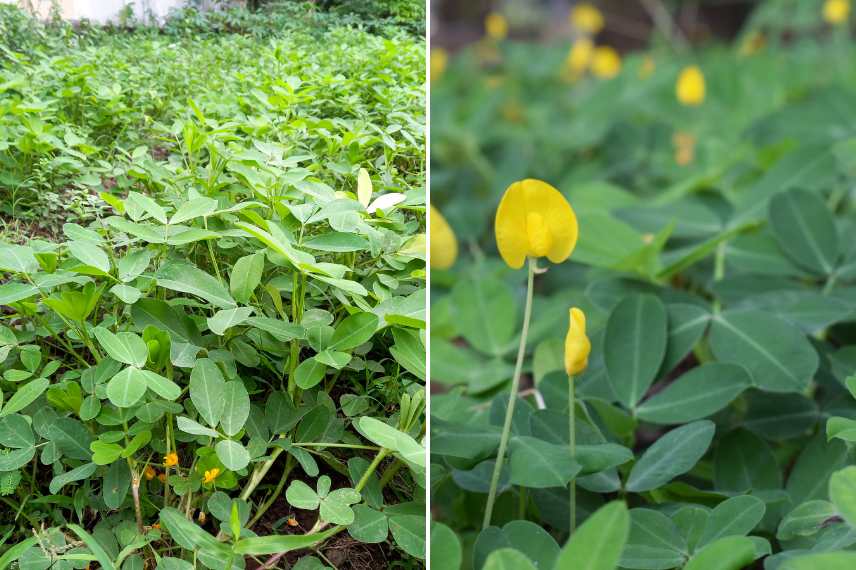
Foliage and flowers of the peanut
So far, nothing particularly remarkable about the peanut. However, specifying that the peanut is a geocarpic plant places it in the category of original plants. Indeed, the fruits of the peanut are produced underground. And this burial is entirely natural. Specifically, after pollination, the flowers wither and develop a gynophore or pseudo-stem that grows beneath the fertilised ovary, towards the soil. From then on, at about 5 cm deep, oblong pods develop, with a fibrous shell, containing the oil-rich seeds we enjoy as snacks—our famous peanuts.
It’s worth noting that the peanut is a good companion in the garden and a green manure, as, like all Fabaceae, it has the ability to fix atmospheric nitrogen and return it to the soil.
Where, when and how to sow peanut seeds?
The peanut is a subtropical herbaceous plant that requires warmth. To germinate, the seeds need a temperature between 22 and 25°C, so sowing is done indoors.
When to sow peanut seeds?
Sowing peanut seeds takes place in March, in a warm, bright, and warm location, such as a conservatory, near a window, or in a greenhouse if the temperature is sufficiently high. This sowing can continue until May. The seeds sprout about 8 to 10 days after sowing.
How to sow them?
To encourage germination, it is essential to remove the seeds from their fibrous shell and, if necessary, peel off the reddish skin surrounding them. Then, soak the seeds overnight in lukewarm water.
- Fill buckets with special sowing compost
- Press the peanut seeds about 2 cm deep (depending on the size of your buckets, you can place 2 to 3 seeds per container). Ideally, you can use biodegradable buckets to make later transplanting easier
- Cover with a thin layer of compost and lightly firm with your fingertips
- Water by misting with water.
Throughout the germination period, the substrate must be kept moist but not excessively wet. Water regularly by misting with water, but avoid saturating the substrate.
As soon as the first leaves appear, place the buckets in full light and water while allowing the substrate to dry out. Once the risk of frost has completely passed, the seedlings can be transplanted outdoors.
Where, when and how to plant the peanut?
Peanut plants, sown indoors by yourself or purchased in buckets, can be planted either directly in the ground in regions with long, hot summers, or in pots elsewhere. This planting takes place in mid-May.
Growing peanuts in the ground
Since the peanut harvest occurs between September and October, or even November, growing them in the ground is only feasible in regions with a mild climate, featuring long and very hot summers. Indeed, peanuts are frost-sensitive at just 0°C.
Though undemanding, peanuts still require light, well-loosened, deep, fertile, and perfectly drained soil. When planting, adding compost is recommended. It is also essential to choose the sunniest spot in the garden, well-sheltered from cold winds.
Peanut plants should be transplanted with a spacing of 30 cm in all directions. This must be done carefully, as the plants are fragile. Take care not to bury the leaves.
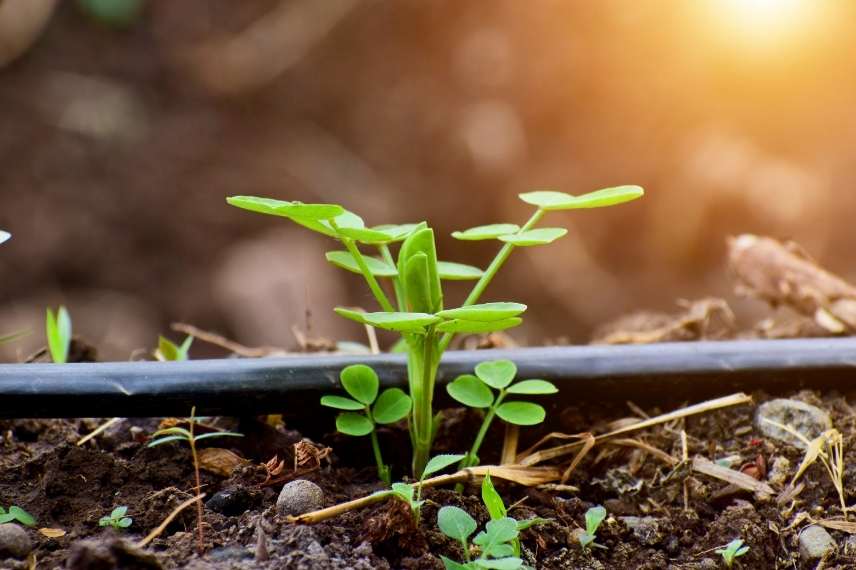
Young peanut seedling
Growing peanuts in pots
In regions with shorter and less intense summers, planting in pots is recommended. Choose a sufficiently wide pot, at least 30 cm in diameter, to allow the gynophores to take root. The pot should be filled with a light, rich substrate made of compost, a bit of sand, and garden soil. Don’t forget to add clay pebbles, gravel, or pumice at the bottom of the pot to ensure drainage.
Place the pot outdoors in a sunny, sheltered spot as soon as temperatures allow.
What maintenance is needed to grow peanuts?
Maintenance is regular, but simple to carry out:
- Water regularly, but without excess until the fruits are buried. Then, stop watering until harvest
- Earth up the young plants when they reach 20 cm in height. If peanuts are grown in pots, simply add a little compost to the substrate
- Hoe regularly until the fruits are buried
- Mulch only once the gynophores have reached the soil
- Fertilisation is not necessary.
As soon as temperatures cool, potted peanuts must be brought indoors to a warm place, as even the slightest frost can be fatal to them. Peanuts should be placed in the light, in a well-ventilated room. Indeed, indoors, peanuts can be sensitive to mites. In open ground, it’s the voles that should be feared. If your land is home to these small rodents, it’s best to bury a wire mesh about ten centimetres deep around your young plants. Peanuts are also susceptible to fungal diseases, but only if the soil is too wet and poorly drained.
The harvest and storage of peanuts
The harvest takes place as soon as the foliage has withered, between September and November, depending on the sowing date and the temperature. Peanuts grown in pots will be significantly less productive. In open ground, peanuts are harvested with a garden fork. Leave the brown, wrinkled pods to dry on the soil for a day if the weather is dry.
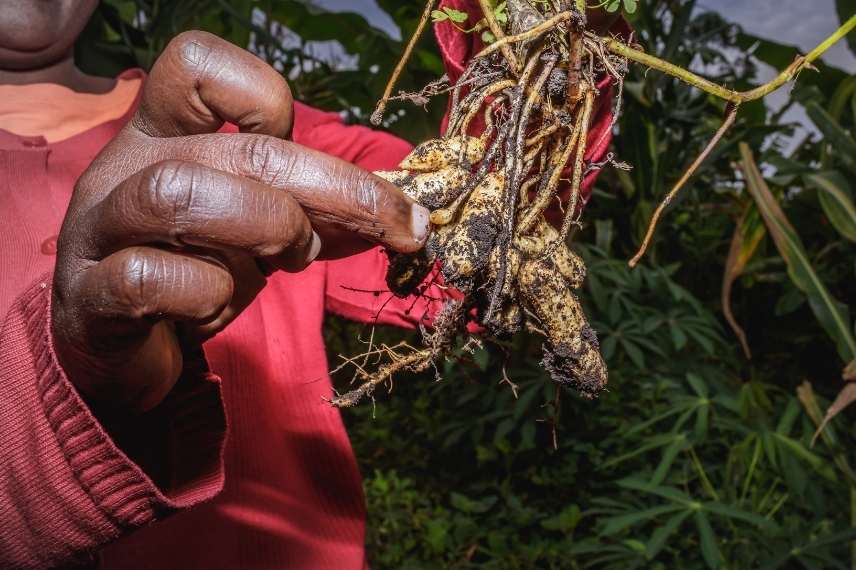
Harvesting peanuts
Then, allow your seeds to dry for 3 to 4 days. This drying process can also be done in a hot oven for 10 minutes. They can be stored in an airtight container for up to 6 months.
- Subscribe!
- Contents
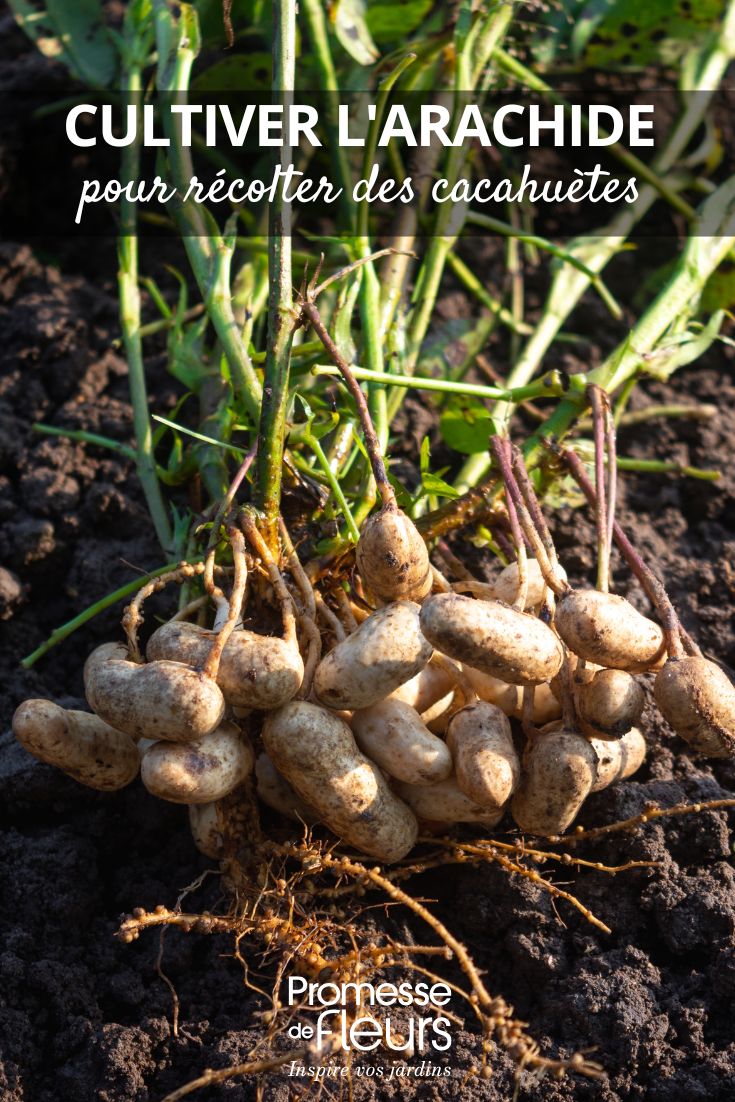































Comments